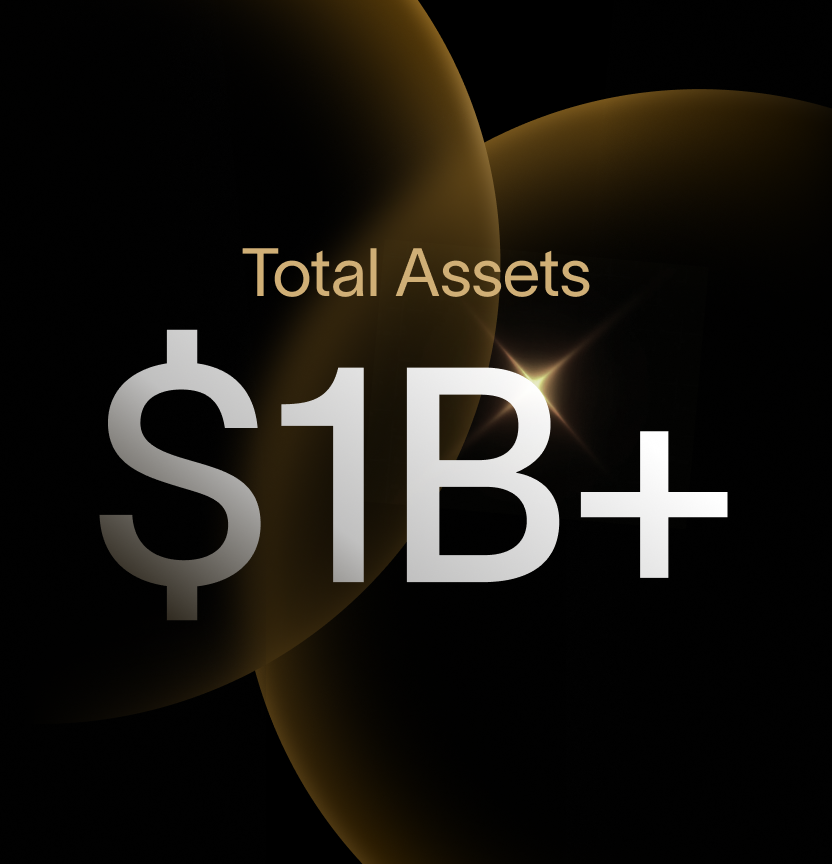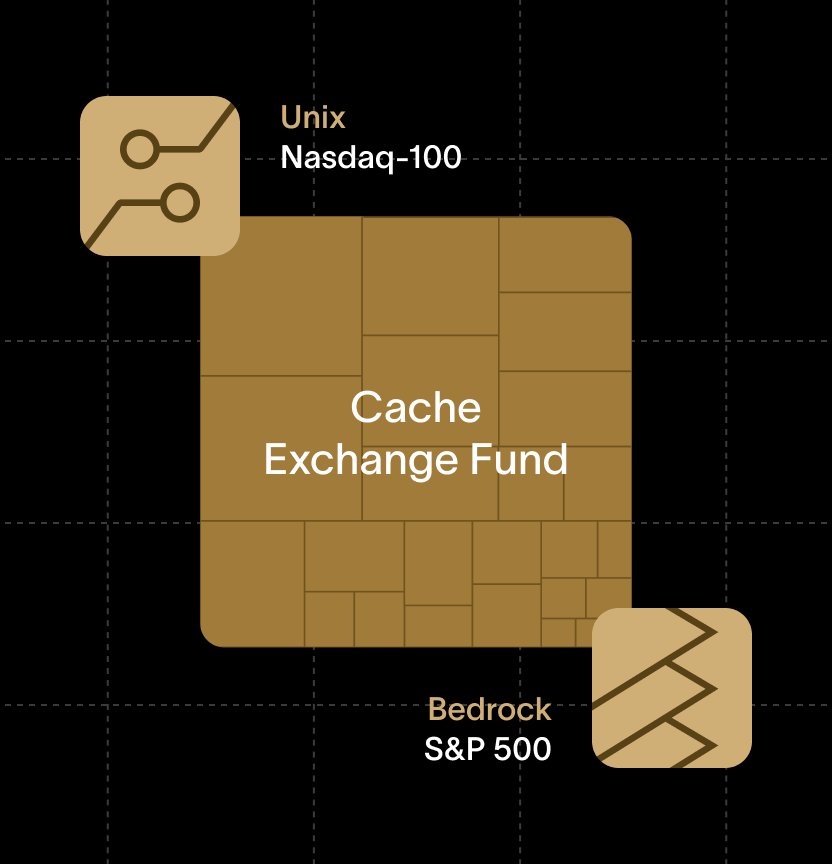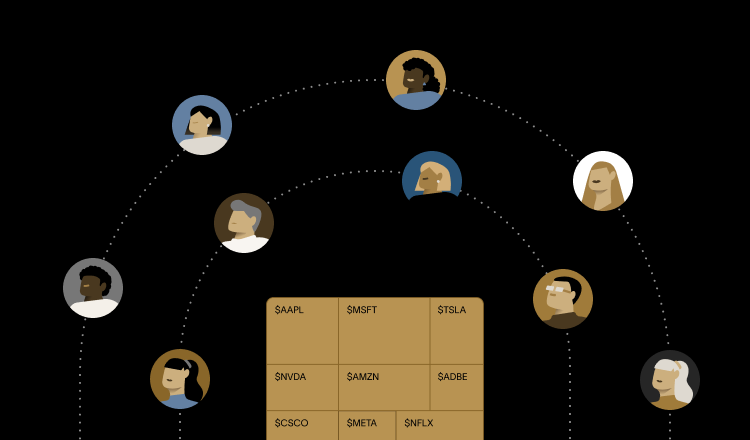Announcing our Series A to make sophisticated investing more accessible
I started Cache to solve a problem I faced myself — too much of my net worth tied to one or two stocks, and selling to diversify meant losing over 35% to capital gains taxes.
I knew I wasn’t alone. Public companies spend over $350 billion a year on stock-based compensation, and after fifteen years of market growth, it’s natural that investors’ portfolios have become lopsided with a few winners.
One of the earliest solutions to this problem, the exchange fund, was barely accessible. It was limited to private wealth clients and rarely had capacity for the stocks people wanted to diversify. That left most investors with two equally unappealing options: keep holding the risk, or sell and pay the tax.
Cache changes that.
Our modern exchange funds let you swap concentrated stock for a diversified portfolio tracking major benchmarks like the Nasdaq-100 or S&P 500. You defer capital gains taxes until you choose to sell, maybe decades later. This keeps more of your hard-earned wealth working for you, instead of reducing your base through taxes today. We’ve lowered the minimum to $100,000 and cut fees significantly compared to legacy providers, while adding innovations like bi-weekly onboarding and tighter index tracking.
A major milestone
Today we’re announcing that Cache has raised $12.5 million in Series A funding at a $125 million valuation, led by Bill Trenchard at First Round Capital, with participation from Quiet Capital and leaders across tech and finance, including Amar Hanspal (former CEO of Autodesk), Tim Kochis (former CEO of Aspiriant and author of Managing Concentrated Stock Wealth), Zach Abrams (founder of Bridge), and Brian Hale (Chief Growth Officer at DoorDash).
This comes on the heels of rapid growth:
- Assets on platform have grown to $625M in just over a year
- Average client invests $900K in a Cache Exchange Fund
- Average client defers $750K in capital gains
We’re already working with a diverse group of public company executives, tenured employees, long-term investors, family offices, and hundreds of wealth management firms.
Building for scale
The traditional exchange fund model wasn’t built for today’s market realities. Capacity was unpredictable. Benchmark tracking could drift. And the biggest frustration — they often turned away the very stocks investors most wanted to diversify.
We’ve rebuilt that model from the ground up. At the heart is Index Sync, our method for keeping portfolios in tight alignment with benchmarks like the Nasdaq-100 and S&P 500. By pairing contributed stocks with ETF holdings, we can fill sector gaps, prevent drift, and accept more of the stocks people actually own, without losing tax efficiency (Read more in our recent deep dive).
It’s working.
UNIX, our Nasdaq-100-benchmarked fund, shows a 0.99 correlation. Bedrock, our S&P 500-benchmarked fund, launched with sector exposure closely tracking the index across all 11 GICS sectors. And because our funds close bi-weekly, investors can diversify faster instead of waiting months for a window to open.
We’ve also been expanding the team. Aaron White (formerly Chief Growth Officer at Adero Partners) now leads Investor Solutions, and Paul Smith (former design lead at Opendoor and Uber) heads product design. Advisors like Peter Crawford (former CFO at Schwab) and Tim Kochis bring decades of industry expertise to our next stage of growth.
What’s next
Our mission is straightforward: make sophisticated, tax-efficient investing available to every investor with a concentrated position — from RSU-holding employees to founders, family offices, and the financial advisors who serve them.
If you’re sitting on a stock that’s been good to you but now dominates your portfolio, you have more options than “sell and pay” or “hold and hope.” Cache was built for exactly that problem. Now, with this Series A, we’re ready to solve it for many more people.
👉 See if you qualify for the upcoming fund close.
--
Detailed Info
Detailed Info
Detailed Info






























